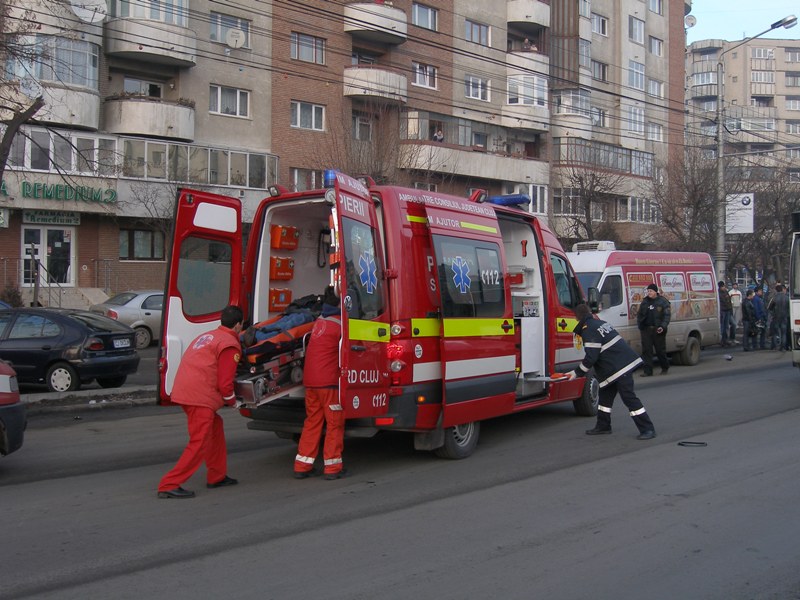
There are a variety of different opportunities for you within the ambulance service. The ambulance service is not just about responding to a 999 call with an emergency ambulance crew. There is also a team of people with different roles who provide the vital back-up, as well as the non-emergency patient transport service that is so valued by the community. Before the accident and emergency crews take to the road, other members of the trained team take the 999 call, decide rapidly what action is needed and then ensure that it happens. If the situation is critical, one of the control staff might have to talk a distressed caller through a lifesaving procedure or collect more essential information as the ambulance travels to the scene. Less obvious on our streets, but still essential, are the non-emergency ambulances. Day after day, patient transport services, as they are known, carry disabled, elderly and vulnerable people to and from outpatient appointments, hospital admissions, day centers, and clinics. Without them, many people would be unable to carry on leading independent lives in the community. The entry requirements and skills required will vary, as will the pay, depending on the role you decide to work in.
Job description and specification for ambulance crew:-
1) resuscitating and stabilizing patients;
2) using high tech equipment e.g. defibrillator;
3) applying spinal and traction splints;
4) administering intravenous drips, drugs, and oxygen.
5) responding to 999 calls for medical assistance at accidents, emergencies and other related incidents, usually in an ambulance with an ambulance technician or emergency care assistant to help;
6) assessing the condition of patients who are injured or taken ill suddenly;
7) providing an immediate course of treatment en route to hospital or on-scene;
8) applying splints to limbs, dressing wounds, administering pain relief, oxygen, drips, and fluids;
9) using highly technical equipment, including ventilators to assist breathing and defibrillators to treat heart failure, to resuscitate and stabilize patients;
10) carrying out certain surgical procedures when necessary, such as intubation (insertion of a breathing tube);
11) monitoring the patient's condition;
12) Assessing whether and how to move patients and, where appropriate, the best location to transport them to;
13) liaising with members of other emergency services, such as the police, fire brigade or coast guard and other ambulance services to ensure the appropriate level of response is provided;
14) working closely with doctors and nurses in hospital accident and emergency departments, briefing them as their patient arrives at hospital;
15) dealing with members of the public and family members present at the scene;
16) driving and crewing an ambulance or other rapid response vehicle;
17) cleaning, decontaminating and checking vehicles and equipment to maintain a state of operational readiness;
18) assisting with patient care in hospitals or health care centers;
19) producing thorough case notes and reporting the patient's history, condition, and treatment to relevant hospital staff.
How to become an Ambulance Crew?
Background
Whatever your age, education and qualifications, you can join the ambulance service at a level that's right for you. You'll be given every support to develop your career if this is what you want. There is on-the-job training for every role, so you can earn while you learn. There is also the chance to study for formal qualifications, to degree level and beyond. Below are some of your options and entry routes. With good GCSEs and/or work experience
Many people in senior roles - whether in clinical or management jobs - came in at a junior level with few qualifications. Local ambulance trusts differ in their entry requirements, however. Some ask for GCSEs or an NVQ or the equivalent, while others will also recruit people with good general education and/or work experience.
To drive an ambulance, whether emergency or non-emergency, you will need a full, manual driving license. If you passed your test after 1996, you may need an extra driving qualification to drive larger vehicles and carry passengers. With A-Levels
Several universities offer courses approved by the Health and Care Professions Council, leading to a diploma, foundation degree and/or BSc honors degree. The courses tend to be modular with flexible entry and exit points, depending on your academic qualifications and any relevant experience. With further study, for example, you can convert a foundation degree into an honors degree.
Some courses are open on a full-time basis to direct entrants, coming in through the Universities and Colleges Admissions Service (UCAS), and others are on a part-time basis to those already employed by an ambulance service trust as a student paramedic. As a graduate
As a qualified paramedic or other registered healthcare professional (such as a specialist nurse), you may be eligible for one of the growing numbers of part-time and full-time degree and postgraduate courses in the developing area of emergency care. These can lead to roles in senior paramedicine.
Median Pay Scale/salary of Ambulance Crew :
In government service, an ambulance crew member gets a fixed amount of around Rs 1500-2000 per call while in private service the money is relatively lower — about Rs 800 per day.
To keep exploring, head on to our page on career banks and blogs on different careers, entrance exams, courses, colleges, jobs, etc.

